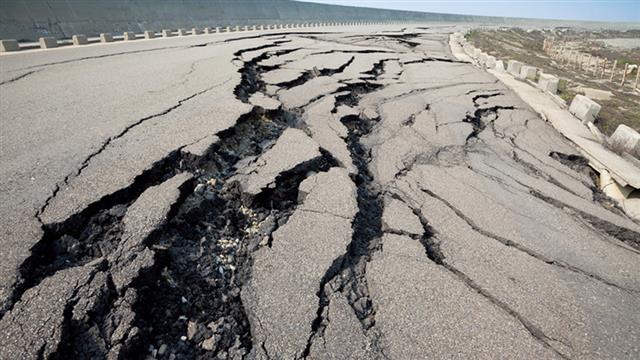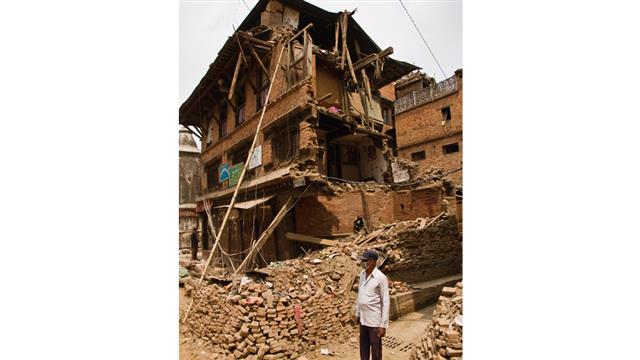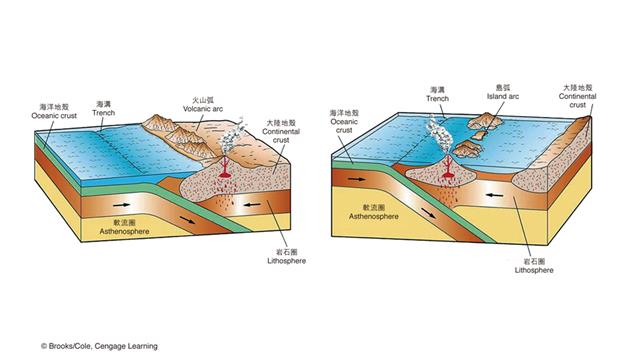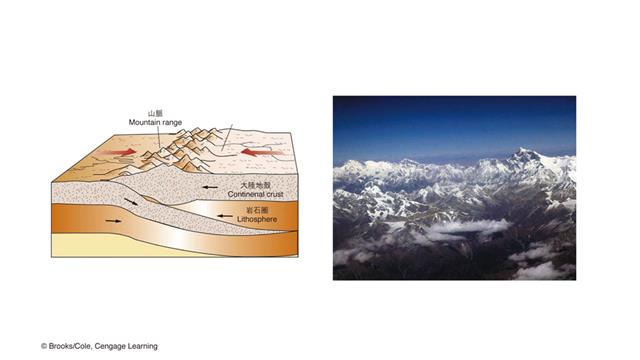The images of northeastern Japan's earthquake and tsunami in 2011 are enduringly vivid, but recently they have been supplanted and superimposed upon by pictures and videos of the earthquake in Nepal that rocked the nation on 25 April—avalanches, flying rocks and smothering debris, and historic sites, squares and spires all reduced to random piles of rubbles.
What causes earthquakes? In what ways is the Nepal quake different from the Japanese one? What causes the most damage in an earthquake? In terms of the energy released, how does the Nepal quake compare with others? These are some of the questions answered by Prof. Wong Teng-fong, director of the Earth System Science Programme at CUHK.
As Professor Wong explained, the earth's surface is made up of different tectonic plates which are in constant motion. Adjacent plates either move apart from each other or come together (converge) at a rate of a few to a dozen centimetres a year. It is when two plates converge that most likely results in large earthquakes.
A plate covered by water (an oceanic plate) is generally younger, colder and denser than one not so covered (a continental plate). When an oceanic plate converges with a continental one, the denser and heavier landmass from the sea would be forced down or subducted into the continental plate and pushes up some of the latter's landmass, creating in the process tidal waves in both directions (tsunami). This was what happened in Japan in 2011. Subduction of this type is the more common cause of earthquakes. (Figure 1)
But when two continental plates of more or less equal density come together (collide), neither one has enough density to subduct the other and so the tug of war would result in the elevation of some part of the landmass. High-altitude mountain ridges are created this way. Colliding continental plates present more complicated and diffused tectonic phenomena than subducting ones because instead of a single tear or crack opened up by subduction, collision gives rise to a more expansive and amorphous suture fraught with high-risk spots. Nepal lies where the Indian Plate and the Eurasian Plate have been rubbing against each other at about 5 cm a year since 40 to 50 million years ago. Major earthquakes have been recorded at different places in the suture zone adjoining the two continental plates. (Figure 2)
In either the subduction or the collision type of earth movement, energy is accumulated until a certain point is reached when it has to be released. This is when the ground on which we stand begins to shake, striking much terror into our mind and imagination.
The energy released by the 7.8-magnitude Nepal quake is equivalent to that of detonating 56 billion kilogrammes of explosives. The one that struck Sichuan in 2008, measuring 8.0, released twice as much energy. This is because the relationship between energy and magnitude is a logarithmic one with every increase by 0.2 magnitude corresponding to double the energy released.
log E = 4.8 + 1.5Ms
|
Energy of Different Earthquakes To compare energy between different earthquakes, a Richter magnitude difference of: 0.2 is ~ 2 times the energy 0.4 is ~ 4 times the energy 0.6 is ~ 8 times the energy 1.0 is ~ 32 times the energy 2.0 is > 1,000 times the energy (32 x 32 = 1,024) 4.0 is > 1,000,000 times the energy (324 = ~ 1,148,576) © Brooks/Cole, Cengage Learning |
|---|
The 2011 Japan earthquake measures 9.0. The difference of 1.2 magnitude means that it released 64 times more energy than Nepal. In recorded history, the biggest earthquake happened in 1960 in Chile, measuring 9.5 and releasing energy almost 400 times that of Nepal.
Nepal has a long history of devastating earthquakes. In 1934, an 8.1-magnitude earthquake destroyed 20% and damaged another 40% of the buildings in the Kathmandu Valley. In fact, just two weeks before the quake in April, some of the world's leading earth scientists had met in Kathmandu to assess the vulnerability of the nation in the event of the next mega-quake. Unfortunately, Nature had moved one step ahead of the scientists.
The April 25 Nepal quake is almost like a replay of the 7.6-magnitude earthquake in Kashmir, Pakistan in 2005 where 87,000 people were killed. The damage in Kashmir was mostly done by the disintegration of poorly constructed and ill-maintained infrastructure. Even with rapid advances in seismological science, the cycle of seismic disturbances cannot be predicted with precision within an error margin of years or even decades. But with lessons learned, sometimes at the price of precious lives, it has been proved that a lot can still be done to control or minimize the havoc wreaked by earthquakes even with very little resources. Professor Wong remarked, 'Earthquakes do not kill that many people. Collapsed buildings do.'
The Earth System Science Programme at CUHK adopts a system approach to the study of the four spheres of air, earth, water and living things, as well as the human impacts on our planet. The approach provides the foundation for the probing and solving of issues such as global climate change, air and water pollution, natural hazards, biodiversity, energy resources and sustainability as its curriculum structure and research focus.







